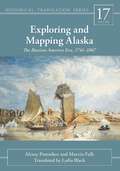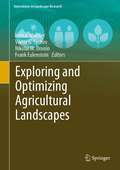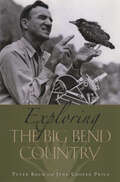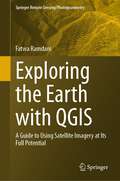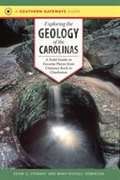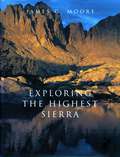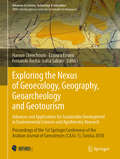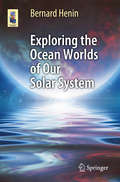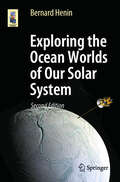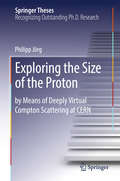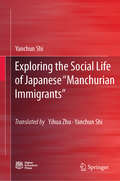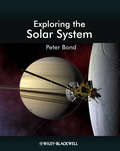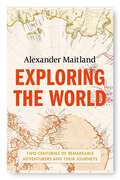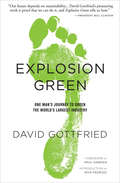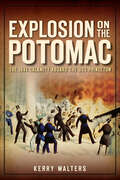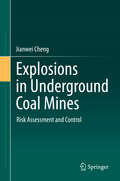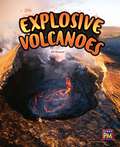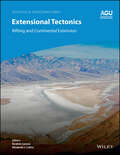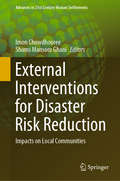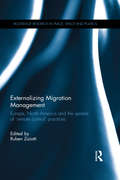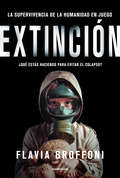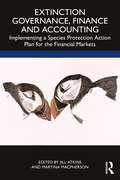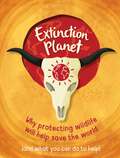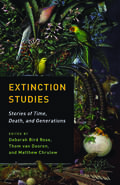- Table View
- List View
Exploring and Mapping Alaska: The Russian America Era, 1741-1867 (Rasmuson Library Historic Translation)
by Alexey Postnikov Marvin FalkRussia first encountered Alaska in 1741 as part of the most ambitious and expensive expedition of the entire eighteenth century. For centuries since, cartographers have struggled to define and develop the enormous region comprising northeastern Asia, the North Pacific, and Alaska. The forces of nature and the follies of human error conspired to make the area incredibly difficult to map. Exploring and Mapping Alaska focuses on this foundational period in Arctic cartography. Russia spurred a golden era of cartographic exploration, while shrouding their efforts in a veil of secrecy. They drew both on old systems developed by early fur traders and new methodologies created in Europe. With Great Britain, France, and Spain following close behind, their expeditions led to an astounding increase in the world’s knowledge of North America. Through engrossing descriptions of the explorations and expert navigators, aided by informative illustrations, readers can clearly trace the evolution of the maps of the era, watching as a once-mysterious region came into sharper focus. The result of years of cross-continental research, Exploring and Mapping Alaska is a fascinating study of the trials and triumphs of one of the last great eras of historic mapmaking.
Exploring and Optimizing Agricultural Landscapes (Innovations in Landscape Research)
by Lothar Mueller Frank Eulenstein Viktor G. Sychev Nikolai M. DroninThe book informs about agricultural landscapes, their features, functions and regulatory mechanisms. It characterizes agricultural production systems, trends of their development, and their impacts on the landscape. Agricultural landscapes are multifunctional systems, coupled with all nexus problems of the 21th century. This has led to serious discrepancies between agriculture and environment, and between urban and rural population. The mission, key topics and methods of research in order to understanding, monitoring and controlling processes in rural landscapes is being explained. Studies of international expert teams, many of them from Russia, demonstrate approaches towards both improving agricultural productivity and sustainability, and enhancing ecosystem services of agricultural landscapes. Scientists of different disciplines, decision makers, farmers and further informed people dealing with the evolvement of thriving rural landscapes are the primary audience of this book.
Exploring the Big Bend Country
by Peter Koch June Cooper PricePhotographer-naturalist Peter Koch first visited the new Big Bend National Park in February, 1945, on assignment to take promotional pictures for the National Park Service. He planned to spend a couple of weeks—and ended up staying for the rest of his life. Koch’s magnificent photographs and documentary film-lectures Big Bend, Life in a Desert Wilderness and Desert Gold introduced the park to people across the United States, drawing thousands of visitors to the Big Bend. His photographs and films of the region remain among the best ever produced, and are an invaluable visual record of the first four decades of Big Bend National Park. In this highly readable book, Koch’s daughter June Cooper Price draws on the newspaper columns her father wrote for the Alpine Avalanche, supplemented by his photographs, journal entries, and short pieces by other family members, to present Peter Koch’s vision of the Big Bend. The book opens with his first “big adventure,” a six-day photographic trip through Santa Elena Canyon on a raft made from agave flower stalks. From there, Koch takes readers hiking on mountain trails and driving the scenic loop around Fort Davis. He also describes “wax smuggling” and other ways of making a living on the Mexican border; ranching in the Big Bend; the prehistory and Native Americans of the region; collaborating with botanist Barton Warnock on books of Trans-Pecos wildflowers; and the history and beauty of Presidio County, the Rio Grande, and the Chihuahuan Desert. This fascinating blend of firsthand adventures, natural history, and personal musings on anthropology and history creates an unforgettable portrait of both Peter Koch and the Big Bend region he so loved.
Exploring the Earth with QGIS: A Guide to Using Satellite Imagery at Its Full Potential (Springer Remote Sensing/Photogrammetry)
by Fatwa RamdaniWith the rapid advancements in satellite technology, earth remote sensing has become an indispensable tool for a wide range of applications, from environmental monitoring to disaster management. However, the vast amount of data generated by these satellites can be overwhelming for many researchers and practitioners who lack the necessary skills and tools to process and analyze it. This is where QGIS comes in. QGIS is a powerful, open-source Geographic Information System (GIS) software that has been extensively used in the field of earth remote sensing. It provides a user-friendly platform for processing, analyzing, and visualizing satellite imagery, enabling users to unlock the full potential of earth remote sensing data. The purpose of this book is to help researchers and practitioners who lack the necessary skills and tools to process and analyze satellite imagery using QGIS. There are several books that cover the use of QGIS for earth remote sensing, but most of them are either too technical or too general. This book fills this gap by providing a comprehensive and user-friendly guide to using QGIS for earth remote sensing applications. It includes a range of real-world case studies that demonstrate the power and versatility of QGIS for solving complex problems in earth remote sensing. This will provide readers with practical examples of how to use QGIS for earth remote sensing and inspire them to explore new applications and possibilities. The book is intended for GIS professionals, students (undergraduate and graduate), and researchers who are interested in using QGIS for earth remote sensing applications. It will be particularly useful for those who are new to QGIS or who want to expand their knowledge of the software for remote sensing purposes.
Exploring the Ethical Dimension in Recording and Documenting Cultural Heritage
by Efstratios StylianidisThis book addresses the complex challenges and responsibilities involved in preserving humanity's collective heritage. It emphasizes the significance of cultural heritage in shaping community identity and historical continuity, advocating for interdisciplinary collaboration and ethical rigor. The introduction underscores the urgent need to protect artifacts and monuments from threats such as natural disasters and human actions, emphasizing the importance of global cooperation and the use of digital technologies for enhanced preservation. The book covers various aspects of cultural heritage protection, beginning with detailed methods for recording and documenting cultural objects and sites using techniques such as laser scanning and photogrammetry. It offers a global perspective on cultural heritage protection, discussing international conventions, regional agreements, and national laws. Ethical frameworks that guide professionals in the field are explored, addressing issues of ownership, repatriation, privacy, and commercialization, and promoting transparency, integrity, and community involvement. Furthermore, the book examines the historical context and evolving practices in cultural heritage recording and documentation. It emphasizes the need for trustworthy data, focusing on principles of accuracy, completeness, and security. Legal issues, including intellectual property rights, privacy, and ownership, are also explored, with advocacy for international cooperation and harmonization. Equipped with essential knowledge and tools for safeguarding cultural heritage, this book serves as a vital guide for researchers, professionals and policymakers, empowering them to protect cultural heritage for future generations.
Exploring the Geology of the Carolinas: A Field Guide to Favorite Places from Chimney Rock to Charleston (Southern Gateways Guides)
by Kevin G. Stewart Mary-Russell RobersonHow were the Appalachian Mountains formed? Are the barrier islands moving? Is there gold in the Carolinas? The answers to these questions and many more appear in this reader-friendly guide to the geology of North Carolina and South Carolina. Exploring the Geology of the Carolinas pairs a brief geological history of the region with 31 field trips to easily accessible, often familiar sites in both states where readers can observe firsthand the evidence of geologic change found in rocks, river basins, mountains, waterfalls, and coastal land formations.
Exploring the Highest Sierra
by James G. MooreWritten for the general reader with an interest in geology, natural history, and the early explorations of the highest part of California’s Sierra Nevada range, this book is also an indispensable guide for visitors to Sequoia and Kings Canyon National Parks and adjacent areas. Maps, photographs, and geologic guides help visitors understand the formation of the awesome natural features before them. The region was one of the last parts of the United States to be explored, and it was only during the Civil War that the first scientific party attempted a reconnaissance map of the region. They discovered, in the process, that it included the highest mountain then in the United States, Mount Whitney. The book describes the arduous travels of the early explorers, including John C. Fremont and John Muir, and weaves the history of exploration together with modern geologic concepts to show the early naturalists’ contributions to geologic thought. Throughout, all terms that may be unfamiliar to non-geologists are simply and succinctly defined, and the book is richly punctuated with anecdotes, tales, myths, and biographical sketches of colorful characters associated with the region. The book is illustrated with some 224 early etchings and maps, modern photographs, and diagrams, including 44 maps that incorporate 12 historical charts dating back to the earliest explorations. A series of 15 maps (in color) of the region encompassing the parks, all at the same scale, feature such diverse aspects as the trails pioneered by John Muir, the extent of glacial ice during the Ice Age, and the location of geologic faults and epicenters. Geologic guides for the region’s principal roads and trails define the mileage of all lookouts and points of interest so that the visitor can examine the described features at first hand. The southern half (more than 100 miles) of the John Muir trail lies within the region, and the book includes a geologic guide to this high-altitude wilderness trail.
Exploring the Nexus of Geoecology, Geography, Geoarcheology and Geotourism: Proceedings of the 1st Springer Conference of the Arabian Journal of Geosciences (CAJG-1), Tunisia 2018 (Advances in Science, Technology & Innovation)
by Ezzoura Errami Haroun Chenchouni Fernando Rocha Luisa SabatoThis edited volume is based on the best papers accepted for presentation during the 1st Springer Conference of the Arabian Journal of Geosciences (CAJG-1), Tunisia 2018. The book is of interest to all researchers in the fields of Environmental Sciences, Geoecology, Agroforestry, Geography, Geoarcheology and Geotourism. The Mediterranean Basin, Middle East and surrounding regions are ecologically unique due to large differences in climatic, geographical, and geological features, which grant countries of these regions with significant socio-economic potentials in terms of fertile agricultural lands, rich natural resources, and the existence of strategic resources such as crude oil and natural gas. However, the valuation of ecosystem functions, goods and services of natural and cultural heritages and bioressources of these regions is still little known. This volume offers an overview of the latest information and ideas on the physical environment of these regions, assessment and monitoring of natural bioressources including flora and fauna, and the use of cutting-edge methods for the development of sustainable agricultural systems. It gives also new socio-economic insights on geotourism and archaeology. Main topics include:1. Environmental Assessment and Monitoring of Agrisilvicultural Systems2. Environmental Impacts and Restoration Ecology of Natural and Agricultural Habitats3. Investigations and Applications in Environmental Biotechnology4. Spatiotemporal Patterns of Marine Biodiversity and Terrestrial Paleobiodiversity5. Socio-economics of Geotourism and Archaeology
Exploring the Ocean Worlds of Our Solar System (Astronomers' Universe)
by Bernard HeninIn the last 25 years, planetary science experienced a revolution, as vast oceans of liquid water have been discovered within the heart of the icy moons of our Solar System. These subsurface oceans lie hidden under thick layers of ice. We call them ocean worlds. Some of these icy moons, such as Ganymede, may hold two to three times more liquid water than all the water present on Earth, while others, such as Enceladus and Europa, are thought by astrobiologists to be our best hope of finding extraterrestrial life. In this book, we will explore and compare a variety of Solar System ocean worlds, meeting in the process 22 of the most intriguing objects, from the giant asteroid Ceres to the enigmatic, distant Sedna. In doing so, we will also encounter the multiple spacecraft that brought back most of what we know of these worlds (Pioneers, Voyagers, Cassini-Huygens, etc.), as well as the latest scientific research on this new topic. We will also entertain the possibility of life on each of these ocean worlds by assessing their habitability, as ultimately, these ocean worlds might hold the key to answering the fundamental questions in life: How did life appear? Where do we come from? Is there life out there?
Exploring the Ocean Worlds of Our Solar System (Astronomers' Universe)
by Bernard HeninIn the past 25 years, planetary science has undergone a revolution with the discovery of vast oceans of liquid water within the icy moons of our Solar System. These subsurface oceans are concealed beneath thick ice layers. We refer to these moons and similar ocean-bearing planetary objects as ocean worlds. In this 2nd edition, we delve into and compare the latest scientific discoveries on 22 confirmed or potential ocean worlds, ranging from the giant asteroid Ceres and the icy moons Europa and Enceladus to the distant dwarf planets of the outer Solar System such as Pluto, Sedna, and Eris. Along the way, we explore the contributions of multiple spacecraft, such as the Pioneers, the Voyagers, Galileo, Cassini-Huygens, and many others, which have provided much of our current knowledge about these worlds, as well as the latest scientific research on this subject. This book also explores the potential for life on each of the confirmed ocean worlds evaluating their habitability. Ultimately, these might hold the key to answering fundamental questions about life: How did life begin? Is there life beyond Earth? Where do we come from? With contributions from leading planetary scientists at NASA, ESA, and other institutions, this book aims to be the definitive reference for anyone interested in this captivating subject.
Exploring the Size of the Proton
by Philipp JörgThis book is a rare jewel, describing fundamental research in a highly dynamic field of subatomic physics. It presents an overview of cross section measurements of deeply virtual Compton scattering. Understanding the structure of the proton is one of the most important challenges that physics faces today. A typical tool for experimentally accessing the internal structure of the proton is lepton–nucleon scattering. In particular, deeply virtual Compton scattering at large photon virtuality and small four-momentum transfer to the proton provides a tool for deriving a three-dimensional tomographic image of the proton. Using clear language, this book presents the highly complex procedure used to derive the momentum-dissected transverse size of the proton from a pioneering measurement taken at CERN. It describes in detail the foundations of the measurement and the data analysis, and includes exhaustive studies of potential systematic uncertainties, which could bias the result.
Exploring the Social Life of Japanese “Manchurian Immigrants”
by Yanchun ShiThe book studies the “Manchurian immigrants” from many important aspects suchas agricultural operation, education, religion, and women’s issues. It contains thefollowing features: first, readers can get deeper understanding on the “Manchurianimmigrants” policies by investigating the agriculture-based social life of the“Manchurian immigrants” in Northeast China; second, studying the life conditions ofthe “Manchurian immigrants” can make up for the lack of researches in related fieldto some extent; third, readers are given chances by this book to learn Japanese societyand Japanese people from another facet.
Exploring the Solar System (Coursesmart Ser.)
by Peter BondThe exploration of our solar system is one of humanity's greatest scientific achievements. The last fifty years in particular have seen huge steps forward in our understanding of the planets, the sun, and other objects in the solar system. Whilst planetary science is now a mature discipline - involving geoscientists, astronomers, physicists, and others – many profound mysteries remain, and there is indeed still the tantalizing possibility that we may find evidence of life on another planet in our system.Drawing upon the latest results from the second golden age of Solar System exploration, author Peter Bond provides an authoritative and up-to-date account of the planets, satellites and smaller debris that orbit the Sun. Written in an informal style, with minimal use of mathematics, this book is the ideal introductory text for non-science students and other readers with little or no science background. With the aid of numerous illustrations, many in full colour, this exciting book brings to life the weird and wonderful worlds that populate our corner of the Universe. This book: Assumes no background in physics , astronomy or mathematics Carefully explains key concepts Gives balanced coverage to areas of controversy or uncertainty in planetary science Is in in full color throughout and richly illustrated An interview with Peter can be found at http://wisciblog.com/2012/02/28/exploring-the-solar-system/
Exploring the World: Two centuries of remarkable adventurers and their journeys
by Alexander MaitlandExplorers and travellers have always been attracted by the lure of the unknown. By traversing and mapping our planet, they have played a vital role in mankind's development. For almost two hundred years, the Royal Geographical Society has recognised their achievements by awarding its prestigious gold medals to those who have contributed most to our knowledge of the world.Taking us on a journey across mountains and deserts, oceans and seas, Exploring the World tells the stories of more than eighty of these extraordinary men and women. Some, such as David Livingstone, Scott of the Antarctic and Jacques-Yves Cousteau, are well known; whilst others, such as William Chandless and Ney Elias, are today less familiar. Some dreamed of being the first to sight a lake or a river; others sighted some of the world's greatest natural features by chance. Some were naturalists, anthropologists or mountaineers; others went in search of explorers who had vanished without trace, or had been shipwrecked or marooned.Filled with epic tales of endurance and perseverance, Exploring the World celebrates a group of exceptional individuals possessed of indomitable courage, boundless determination and adventurous spirit. It portrays a variety of fascinating lives driven by curiosity, wanderlust and the pursuit of knowledge - and, in doing so, provides a unique overview of two centuries of exploration.
Explosion Green: One Man's Journey to Green the World's Largest Industry
by David GottfriedThe inspiring true account of one man&’s successful mission to bring sustainability into the building industry around the world. The winner of three Indie Book Awards, Explosion Green tells the twenty-year story of the global green building movement through the eyes of David Gottfried, the man who helped start it all. Explosion Green reveals the inner workings of the building industry as it comes to grips with the need for environmentally friendly practices. It describes how the industry has evolved, and how this evolution has helped fight climate change and prevent further damage to the environment while creating a multibillion-dollar industry. Filled with his unique insight and self-deprecating humor, Gottfried&’s riveting memoir demonstrates how one person can start a global movement. &“Our future depends on sustainability . . . David Gottfried&’s pioneering work is proof that we can do it, and Explosion Green tells us how.&” —President Bill Clinton &“Transformation of the most important sector in the nation&’s energy economy resulted from David Gottfried&’s pioneering work. Students and professionals will be inspired by this book as it describes the pathway that led to such monumental results.&” —Gil Masters, Professor Emeritus of Civil and Environmental Engineering, Stanford University &“David inspires us to believe we have the ability to envision a future that we might create. He has lived it firsthand and generously shares his learning with us.&” —Maria Atkinson Am, Cofounder, Green Building Council of Australia
Explosion on the Potomac: The 1844 Calamity Aboard the USS Princeton (Disaster Ser.)
by Kerry WaltersIn 1844, the USS "Princeton" was the most technologically sophisticated warship in the world. Its captain, Robert Stockton, and President John Tyler were both zealous expansionists, and they hoped that it would be the forerunner in a formidable steam-powered fleet. On a Potomac cruise intended to impress power brokers, the ship's main gun--the Peacemaker--exploded as the vessel neared Mount Vernon. Eight died horribly, while twenty others were injured. Two of Tyler's most important cabinet members were instantly lost, and the president himself had a near miss--making it the worst physical disaster to befall a presidential administration. The tragedy set off an unpredictable wave of events that cost Tyler a second term, nearly scuttled plans to add Texas to the Union and stirred up sectional rancor that drove the nation closer to civil war. Author Kerry Walters chronicles this little-known disaster that altered the course of the nation's history.
Explosions in Underground Coal Mines: Risk Assessment And Control
by Jianwei ChengThis book addresses the hazard of gas explosions in sealed underground coal mines, and how the risk of explosion can be assessed, modeled, and mitigated. With this text, coal mine operators and managers will be able to identify the risks that lead to underground mine gas explosions, and implement practical strategies to optimize mining safety for workers. In six chapters, the book offers a framework for understanding the sealed coal mine atmosphere, the safety characteristics that are currently in place, and the guidelines to be followed by engineers to improve upon these characteristics. The first part of the book describes the importance and characteristics of underground gas mine explosions in a historical context with data showing the high number of fatalities from explosion incidents, and how risk has been mitigated in the past. Chapters also detail mathematical models and explosibility diagrams for determining and understanding the risk factors involved in mine explosions. Readers will also learn about safety operations, and assessments for the sealed mine atmosphere. With descriptions of chapter case studies, mining engineers and researchers will learn how to apply safety measures in underground coal mines to improve mining atmospheres and save lives.
Extensional Tectonics: Rifting and Continental Extension (Geophysical Monograph Series #278)
by Elizabeth J. Catlos İbrahim ÇemenA synthesis of current knowledge on global extensional tectonics The extension of Earth’s lithosphere occurs at divergent plate boundaries as well as in plate interiors. The geological, geochemical, and sedimentary processes of extension offer insights into topics ranging from the fundamentals of tectonics to the evolution of life. Extensional Tectonics: Rifting and Continental Extension reviews present-day knowledge of extensional tectonic processes and explores examples from around the world. Volume highlights include: Overview of extensional tectonic processes from continental rifting to oceanic basin formation In-depth examination of extension along rift systems and rift margins Review of post-collisional continental extension Examples from Africa, Asia, Europe, and the Americas Insights from observations, modeling, and 3D seismic data interpretation of extended terrains This book is one of a set of three in the collection Tectonic Processes: A Global View.Browse the first volume, Compressional Tectonics: Plate Convergence to Mountain Building. The American Geophysical Union promotes discovery in Earth and space science for the benefit of humanity. Its publications disseminate scientific knowledge and provide resources for researchers, students, and professionals.
External Interventions for Disaster Risk Reduction: Impacts on Local Communities (Advances in 21st Century Human Settlements)
by Imon Chowdhooree Shams Mansoor GhaniThis book presents a case study-based analysis of the consequences of external interventions, critically evaluating them from community perspectives. Communities – from rural to urban, and around the world – that are experiencing disasters and changes in climatic variables can perceive the associated risks and evaluate the impacts of interventions. Accordingly, community perspectives, including their perceptions, concerns, awareness, realizations, reactions and expectations, represent a valuable resource. The case-based analysis of impacts on communities can provide a ‘means of learning’ from the experiences of others, thus expanding professionals’ knowledge base, especially regarding disaster mitigation and climate change adaptation practices in varied settings. This book offers valuable insights and lessons learned, in an effort to promote and guide innovative changes in the current planning, management and governance of human settlements, helping them face the future challenges of a changing environment.
Externalizing Migration Management: Europe, North America and the spread of 'remote control' practices (Routledge Research in Place, Space and Politics)
by Ruben ZaiottiThe extension of border controls beyond a country’s territory to regulate the flows of migrants before they arrive has become a popular and highly controversial policy practice. Today, remote control policies are more visible, complex and widespread than ever before, raising various ethical, political and legal issues for the governments promoting them. The book examines the externalization of migration control from an interdisciplinary and comparative perspective, focusing on ‘remote control’ initiatives in Europe and North America, with contributions from the fields of politics, sociology, law, geography, anthropology, and history. This book uses empirically rich analyses and compelling theoretical insights to trace the evolution of ‘remote control’ initiatives and assesses their impact and policy implications. It also explores competing theoretical models that might explain their emergence and diffusion. Individual chapters tackle some of the most puzzling questions underlying remote control policies, such as the reasons why governments adopt these policies and what might be their impact on migrants and other actors involved.
Extinción: La supervivencia de la humanidad en juego. / ¿Qué estás haciendo para evitar el colapso?
by Flavia BroffoniLa información sobre la crisis ecológica y climática está al alcance de todos y en boca de nadie. Extinción nos revela toda la información que no sale en los medios hegemónicos de comunicación, y pone en evidencia la crisis planetaria en que nos encontramos. Este es un libro urgente para entender qué hay detrás de esta crisis. Desde las estrategias políticas, el agronegocio y los modelos educativos hasta las formas de consumo que nos parecen naturales, este libro cuenta con la fuerza suficiente para hacernos ver la realidad y comenzar a actuar conscientemente. Extinción nos revela con evidencia científica la crisis ecológica y climática que atraviesa nuestro planeta. En los próximos cincuenta años 4000 millones de personas vivirán en zonas no aptas para la producción de alimentos. Para 2080 América del Sur estará en una sequía extrema. El 60% de los mamíferos y el 70% de las aves son criados para alimentar humanos. Este año una pandemia puso en estado de emergencia a todo el mundo. El 60% de las enfermedades infecciosas son transmitidas por animales. Mientras, crece la población de animales industrializados en hábitats naturales destruidos y ecosistemas alterados. ¿Qué estamos haciendo para frenar este ecocidio? ¿Por qué esta información no está al alcance de todos? Flavia Broffoni propone darle batalla a la civilización que está arrasando con la naturaleza. Extinción es un libro urgente: quedan menos de diez años para detener el colapso. En palabras de la autora, "la decisión más honesta que podemos tomar en estos momentos de incertidumbre es qué hacer con el Tiempo que tenemos".
Extinction Governance, Finance and Accounting: Implementing a Species Protection Action Plan for the Financial Markets
by Jill AtkinsThe planet is currently experiencing a mass extinction event, with human and business activity being the root cause of species loss and habitat destruction. Industries, companies, banks, investors, accountants and auditors have all played their role. This book explores how they can also provide a solution. The book presents plans, metrics, frameworks, mechanisms and financial innovations that can be, and are being, implemented through the financial markets in order to save and protect species, enhance biodiversity and, at the same time, preserve the financial markets and the business world. This biodiversity handbook addresses the intersection between species extinction and the global capitalist system. With contributions from leading non-governmental organisations such as the Capitals Coalition, Business for Nature, the Ecojustice Foundation, ShareAction and the Endangered Wildlife Trust, plus senior researchers in the field, as well as industry experts from Moody’s, EOS at Hermes Federated Investment Management, BlueBay Asset Management, ODDO BHF Asset Management and OSSIAM (to mention just a few), this book is at the forefront of addressing the crucially important topics of extinction accounting, finance and governance. Drawing on leading research, the book is written in an accessible style and is relevant to researchers and students in the fields of sustainability, governance, accounting, finance, corporate social responsibility and corporate governance. It is essential reading for investors, responsible investors, bankers, business leaders and policy makers in the field of sustainable financial markets. Given the interdisciplinary nature of this book, it is useful to conservationists, ecologists and others involved in species and biodiversity protection.
Extinction Planet
by Anna ClaybourneExtinction Planet offers young readers a clear, insightful look at Earth's wildlife extinction crisisIt is estimated that out of around eight million species on Earth, at least one million plant and animal species are threatened with extinction, and that the current rate of extinction is up to 100 times higher than in any previous mass extinction. And it's human activity that's largely responsible for this frightening decline.Extinction Planet takes a non-alarmist, but truthful, look at Earth's extinction crisis, explaining what a mass extinction is, how they occur and what their repercussions can be. It explores how, as humankind has caused this latest biodiversity crisis, we also have the solutions to slow or stop its damage, from reining in overconsumption, rewilding natural places, making farming more planet-friendly, preventing overfishing and seriously tackling climate change. It also suggests ways we can all live in a more planet-friendly way, from global changes such as investing in renewable energy sources, to individual actions such as buying sustainable products and eating less meat and fish.Following on from Plastic Planet, Hot Planet, Recycled Planet and Sustainable Planet, Extinction Planet features the same blend of illustrations and photos and a striking cover, and is written by the award-winning author Anna Claybourne.Aimed at readers aged 9 and up.
Extinction Studies: Stories of Time, Death, and Generations
by Thom Van Dooren Edited by Deborah Bird Rose Matthew ChrulewExtinction Studies focuses on the entangled ecological and social dimensions of extinction, exploring the ways in which extinction catastrophically interrupts life-giving processes of time, death, and generations. The volume opens up important philosophical questions about our place in, and obligations to, a more-than-human world. Drawing on fieldwork, philosophy, literature, history, and a range of other perspectives, each of the chapters in this book tells a unique extinction story that explores what extinction is, what it means, why it matters—and to whom.
